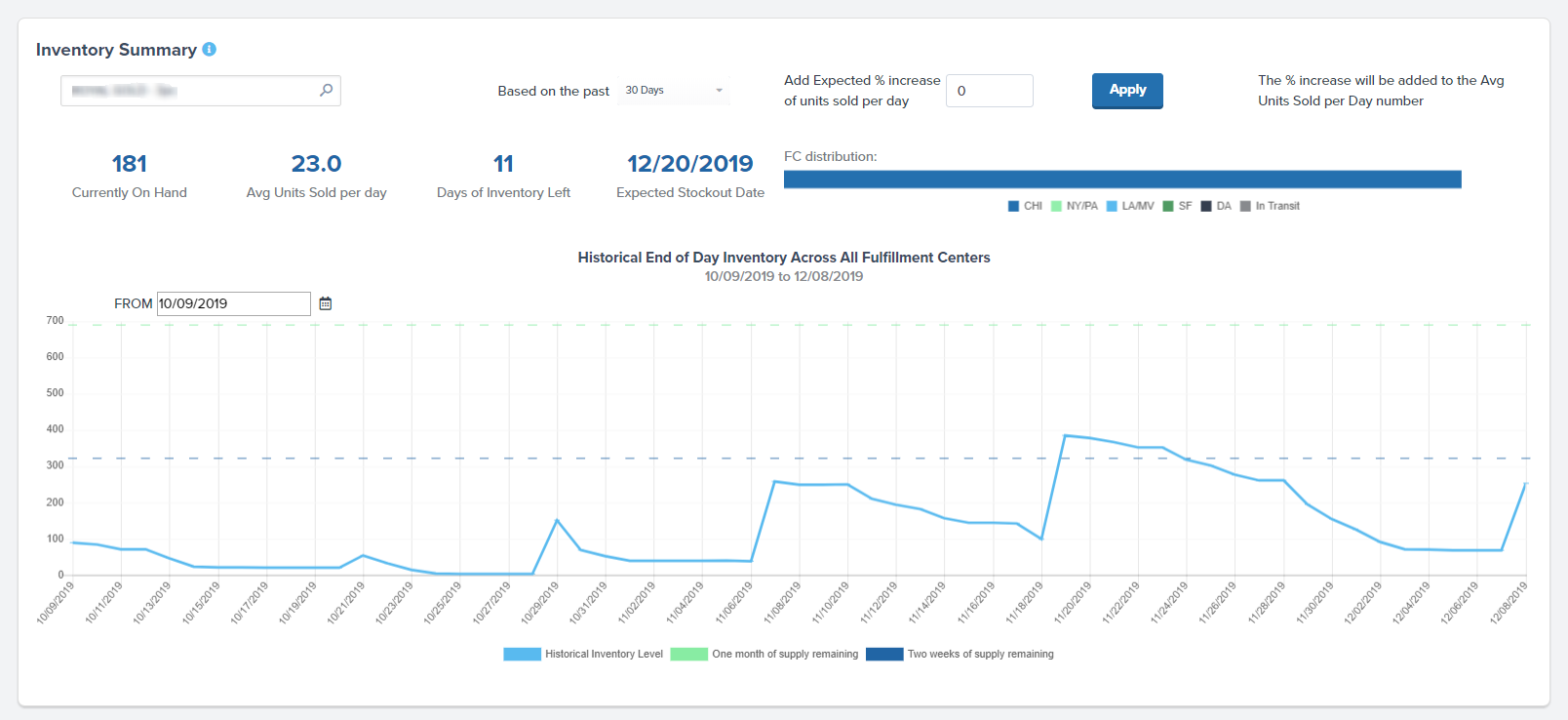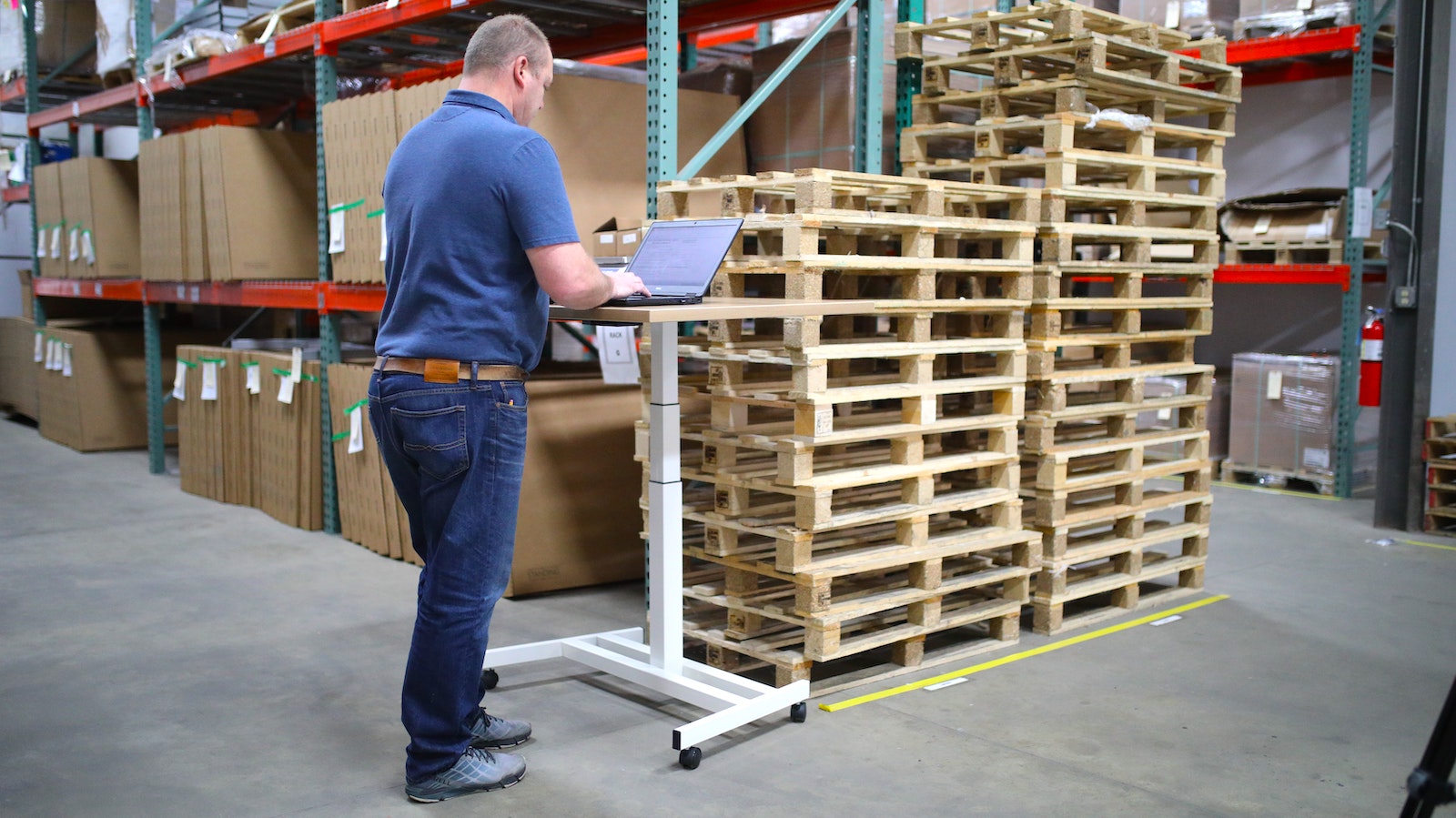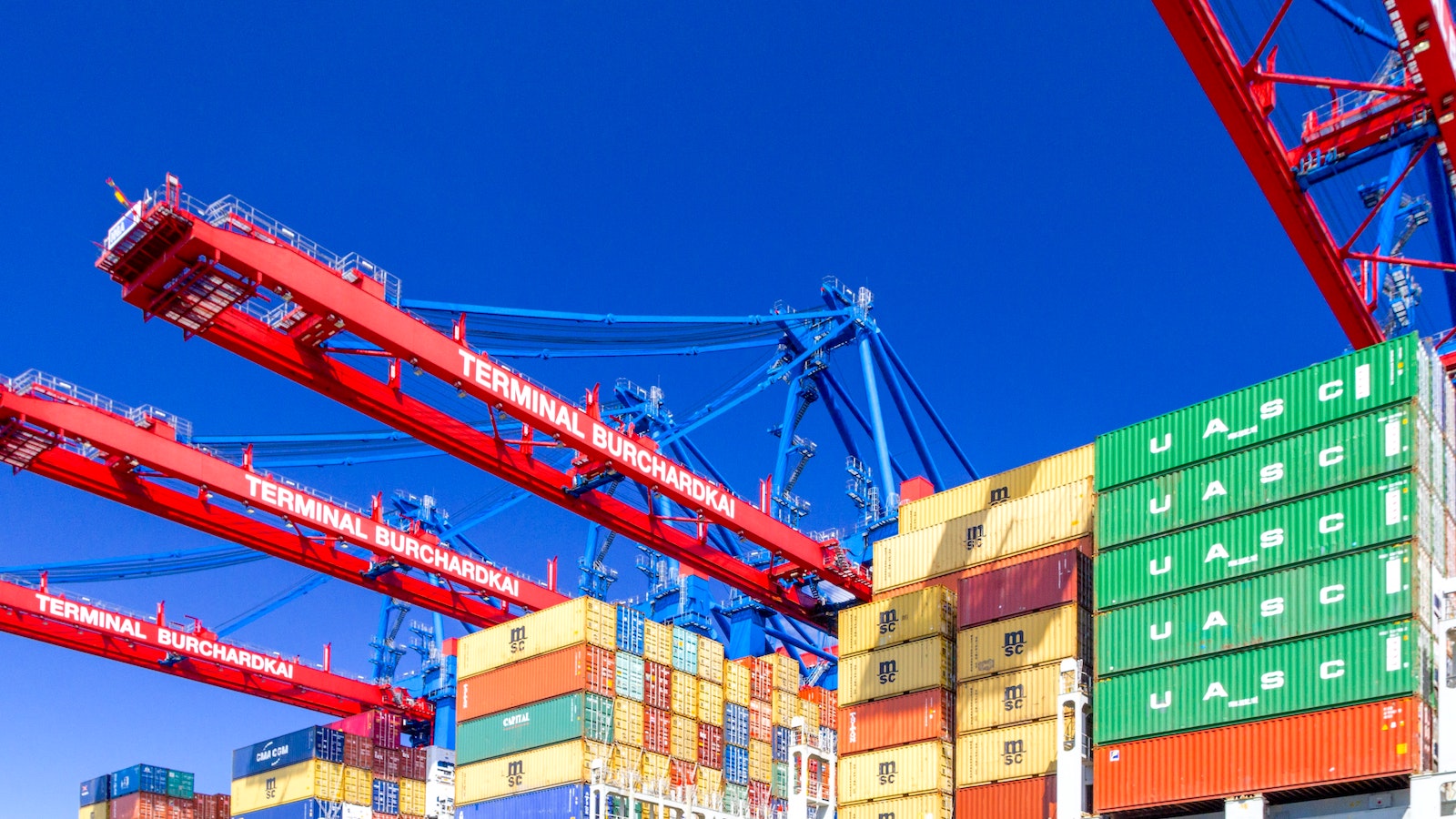Table of Contents
** Minutes
What does digital warehousing mean?
Digital warehousing vs. traditional warehousing
Warehouse digitalization is good news for ecommerce
Digital warehousing: What does the future look like for supply chains?
Digitize your warehousing operations with ShipBob
Optimise your warehouse with ShipBob’s WMS
The future of ecommerce warehousing is already here.
If you think today’s warehouses consist of nothing more than an open industrial space, employees stocking warehouse racks, and forklifts, then you’d be surprised.
Warehouse digitization has paved the way for technology and automation that has transformed the traditional warehouse into a digital warehouse.
Fast-growing online brands rely on “smart” warehouses that provide speed, automation, visibility, and transparency, allowing logistics companies to improve their capabilities, and enabling brands to monitor their supply chain and improve the customer experience.
In this article, we discuss how warehouse digitization is impacting today’s ecommerce supply chain.
What does digital warehousing mean?
Digital warehousing refers to warehousing and distribution services that utilise modern technology and automation to optimise warehouse processes and workflows.
Not only does it improve speed and accuracy, but it also provides full visibility into the ecommerce supply chain.
Digital warehousing enables brands to outsource logistics to a tech-enabled warehouse (often provided by a 3PL provider and known as a ‘fulfilment centre’) for more flexibility and scalability.
By outsourcing, brands can improve their supply chain without the need to invest in their own infrastructure and warehouse automation.
Digital warehousing vs. traditional warehousing
Traditional warehousing refers to receiving and storing ecommerce inventory safely until items are ready to be fulfilled. Tracking and restocking inventory are manually executed by the merchant or the warehousing company.
With no technology to either optimise processes or enhance visibility, these warehouses are often inefficiently managed.
Consequently, supply chain issues occur (from mis-picks, to fulfilment delays) due to a lack of consistent, real-time data and information.
To keep up with the needs of on-demand logistics, direct-to-consumer brands (DTC) rely on a tech-enabled 3PL that provides digital warehousing capabilities and intelligent fulfilment centres.
That way, brands can outsource fulfilment to a team of digital logistics experts that invest in the latest technology and still maintain control over supply chain optimisation.
It’s worth noting that there are other warehousing service options besides partnering with 3PL, including dropshipping, 4PLs or lead logistics providers, and on-demand warehousing, and it’s important to understand the differences.
There are pros and cons to each, and the type of warehouse-as-a-service you choose depends on your brand’s needs.
3PLs often offer the best return on investment, as brands are able to outsource the retail fulfilment process, expand into more than one fulfilment centre, track inventory in real time, and save time and money in the long run.
Additionally, a 3PL operates their entire network using a warehouse management system (WMS), which enables consistency, transparency, and offers access to hands-on customer support.
Warehouse digitalization is good news for ecommerce
Warehouse digitization enables brands to manage their supply chain, enhance visibility and transparency, improve speed, and maintain a high order accuracy.
Here are the top three benefits of warehouse digitization, and how it impacts today’s fastest growing brands’ bottom lines.
1. Improves warehouse efficiency
Warehouse digitization cuts out mundane tasks by automating them, which helps eliminates time-consuming manual work, saving thousands of man-hours.
For instance, using an inventory scanner system that can scan and track items using barcodes, an order picker can quickly locate and pick an item to complete an order.
The warehouse setup and design can also be improved using technology to optimise storage and streamline order fulfilment workflows by tracking how inventory is performing by SKU at each warehouse location.
2. Increases warehouse visibility
Knowing how many units of each product are stored at each distribution centre is key to supply chain management.
By implementing digital warehousing solutions, retailers can easily track stock and view orders by status. Visibility also helps to reduce logistics costs by tracking carrying costs and inventory turnover over time.
Since order data is automatically recorded, this makes it easier for brands to access historical data and insights to forecast demand, prevent stockouts, and therefore improve customer satisfaction.
Ultimately, increasing warehouse visibility enables business owners to step away from the day-to-day operations and still be able to track their supply chain and make informed business decisions.
3. Eliminates siloed systems
As an ecommerce business grows, so does your supply chain. There are several moving parts in the ecommerce supply chain, from manufacturing and receiving inventory, to warehouse picking and shipping orders, and even managing returns.
By implementing a WMS and connecting it with an inventory management software, it streamlines your logistics tech stack and enables accurate, real-time data to ensure accuracy of information throughout your distribution network.
By eliminating siloed systems, you can track inventory stored in multiple fulfilment centres, know when it’s time to replenish inventory, and access inventory levels and view order status at any time.
“ShipBob allows us to make changes to bundles on the fly with complete control and visibility, which is important in monthly subscription boxes, holiday bundles, and many more scenarios. With the new fulfilment network, we had to rely on a game of telephone and someone else to do this for us.
When trying to leave the fulfilment network to return back to ShipBob, the fulfilment network had 1,500 units of missing inventory that they couldn’t find.
Because of a lack of ownership of the entire fulfilment stack, it’s been difficult to rectify, unlike with ShipBob who owns the entire stack: inventory and order management system, warehouse management system, and their fulfilment centres.”
Gerard Ecker, Founder & CEO of Ocean & Co.
Digital warehousing: What does the future look like for supply chains?
To efficiently track and monitor inbound and outbound logistics, it’s important to implement the right technology and systems that digitize warehouse management to save time and money.
Here are the types of warehouse digitization technologies that will become even more important throughout 2021 and beyond.
Real-time data exchange
A digital ecommerce warehousing solution should automatically collect and record real-time data and streamline it through one dashboard — even as you expand into new sales channels and distribution locations.
For instance, ShipBob’s fulfilment technology offers advanced data and analytics reporting, which displays visual insights related to inventory, orders, storage costs, and fulfilment and shipping performance.
Since ShipBob directly integrates with your online store(s) and leading ecommerce solutions (from inventory planning to returns management), data and information can be shared across all systems to establish an omnichannel fulfilment strategy.
For a more custom solution, ShipBob also provides a Developer API, which makes it easy to plug ShipBob into your existing tech stack.
“We utilise ShipBob’s Inventory API, which allows us to programmatically retrieve real-time data on how many units of each product are currently stored at ShipBob’s warehouses. We currently use this API to generate custom reports to tie this inventory data into our accounting platforms.”
Warehouse management system (WMS)
A WMS monitors and controls daily logistics operations in one or more warehouses and tracks all inventory that is being received, stored, picked, packed, shipped, and replenished in the most efficient way possible.
A dependable WMS, such as ShipBob’s proprietary system that’s used across its entire network, allows brands to monitor inventory movement, from which items are being received to how much inventory at each location is ready to be fulfilled and shipped.
“Off the bat, I liked that I would be able to control multiple warehouses through one page with ShipBob.
With my old 3PL, I could never just open a page and get the info I wanted. I had to click several times, then export it, and try to make sense of it. ShipBob lets you manage your inventory while providing important data in a very digestible way.”
Wes Brown, Head of Operations at Black Claw LLC
ShipBob’s proprietary WMS also provides transparency by tracking almost everything — from how many orders per hour a picker can pick to how long it takes to receive, count, and stow new inventory that arrives. These insights are shared with the merchant to help them better manage their operations.
Demand forecasting
Forecasting demand is one of the toughest things to do in a dynamic retail environment, but luckily there are several supply chain forecasting methods that make it easier for brands to forecast demand.
The best ways to forecast demand is by cutting out the guesswork by using data to analyse inventory performance over time. For instance, ShipBob’s makes it easy to view historical sales data, which can support supply chain planning, including budget, production lead times, storage, and pricing strategy.
Forecasting demand using the latest tech-enabled tools to record and collect data will help you stay agile in the face of seasonality, aggressive competition, and geography-based demand fluctuations.
Wearable technology
Retailers who wish to reinvent their warehouse operations and improve productivity will find merit in adopting wearable technology.
It should come as no surprise that in 2021 and beyond, wearable technology will be implemented across warehouses for more interactive warehouse processes.
The likes of smart glasses to handheld scanners, activity-tracking bracelets, and mobile printers allow warehouse employees to gain access to a vast amount of information on the go.
They come with smart sensors and are synced to warehouse management systems to speed up warehouse processes.
Warehouse automation
Warehouse automation allows you to automate the flow of inventory from receiving to fulfilment without the need to manually track inventory throughout the supply chain.
For instance, the moment a customer order comes in, ShipBob’s WMS sends it automatically to the closest fulfilment centre to the shipping destination, so items can be shipped to your customer through the fastest, least expensive route.
Everything from storing and tracking inventory to picking, packing, and shipping is also automated to prevent stockouts, save time, and reduce human error.
“Since partnering with ShipBob, we now have an automated system for shipping and can focus our time on new product launches. We continually are able to reliably and quickly fulfil thousands of orders during a single apparel drop.
This partly has to do with ShipBob saving us time by automating the order fulfilment process.”
Jason Ton, CFO of 100 Thieves
Real-time inventory management
One of the biggest reasons why warehouses go digital is that retailers are recognizing the need for improved inventory control and real-time visibility to build supply chain resilience.
Since there are so many factors that play into a well-run supply chain, every fast-growing brand needs access to real-time information to make quick and informed decisions, especially when it comes to inventory.
An inventory management system helps automate warehousing tasks associated with inventory management, such as tracking, reordering, and optimising storage.
It also makes it much easier during tax season, since you can easily generate inventory reports without the need for frequent, time-intensive inventory audits.
ShipBob’s 3PL software includes real-time inventory management tools, so merchants can control stock, manage SKUs, track performance, and much more.

“We roll out new products and designs on our website 1-3 times a month and send new inventory to ShipBob each week. It’s really easy to create new SKUs and restock existing ones using ShipBob’s technology, which is especially important with high inventory turnover.”
Carl Protsch, Co-Founder of FLEO
Autonomous guided vehicles
Autonomous guided vehicles (AGVS) are becoming more popular, especially as the warehousing industry faces labour shortages.
These smart vehicles (such as a forklift) navigate your fulfilment centre by using markers, wires, intelligent vision, or lasers.
When implemented correctly, it can increase warehouse efficiency, improve material handling, and reduce costs, which is why many retailers are designing their digitized warehouses around this new technology.
Digitize your warehousing operations with ShipBob
Due to the rise of on-demand logistics, supply chain warehousing relies on technology and automation to meet customer expectations in a fast-paced industry.
With Amazon and Walmart Marketplace setting the standard around fast, affordable shipping, it can be a challenge for direct-to-consumer brands to compete without making investments in logistics.
But you don’t have to invest in technology and automation to enable supply chain efficiency. The smarter option is to invest in a 3PL partner that offers access to a fulfilment network that is operated by best-in-class digital fulfilment technology.
“We are growing really fast and won’t slow down anytime soon. With ShipBob, we have the option to use more of their warehouses to further reduce shipping costs.
Because ShipBob has a lot of people to handle our orders and additional warehouses we can expand into, we can scale up with ease as we continue to grow quickly. If we ran our own warehouse, it would be much harder to hire people and we’d inevitably outgrow the space.”
Oded Harth, CEO & Co-Founder of MDacne
ShipBob offers a wide range of warehousing and distribution services, across their distributed warehouses for better supply chain management. These services range from receiving, storing, and warehousing, and pick and pack fulfilment, to product distribution and last-mile delivery solutions.
To learn more about how ShipBob works, click the link below to start the conversation.
Optimise your warehouse with ShipBob’s WMS
Already have your own warehouse? ShipBob’s best-in-class warehouse management system (or WMS) can help you manage inventory in real time, reduce picking, packing, and shipping errors, and scale with ease.
By leveraging ShipBob’s WMS (the same one that powers our global fulfilment network) in your own warehouse, your brand can improve efficiency, from receiving to fulfilment to shipping. With built-in automations, flexible picking options, and turnkey integrations with major ecommerce platforms and tools, the ShipBob WMS makes it easy to streamline warehousing operations.
Digital warehousing for your warehouse
To digitize your operations, you need the right tech in place. ShipBob has a best-in-class warehouse management system (WMS) for brands that have their own warehouse and need help managing inventory in real time, reducing picking, packing, and shipping errors, and scaling with ease.
With ShipBob WMS, brands can even leverage ShipBob’s fulfilment services in any of ShipBob’s fulfilment centres across the US, Canada, Europe, and Australia to improve cross-border shipping, reduce costs, and speed up deliveries.
Digital warehousing FAQs
Here are some of the commonly asked questions about warehouse digitization.
What is digital warehousing?
Digital warehousing utilises the latest technology and automation to improve and speed up processes and operational workflows within a warehouse or fulfilment centre. Not only does it enhance speed and accuracy but it also provides the ability to better track supply chain move through more visibility.
How do you digitize a warehouse?
To digitize a warehouse, you must be willing to invest in technology and automation tools that provide transparency, visibility, and efficiency into the supply chain. It can start as simple as integrating an inventory app to track stock in real time, or more advanced like introducing robotics to cut out manual work during the fulfilment process.
What is digital inventory management?
Digital inventory management refers to implementing inventory tracking systems and integrating real-time inventory management with a warehouse management system. Being able to track real-time inventory levels across a distribution network provides full visibility without the need to be involved in the day-to-day operations, while inventory data enables you to make better business decisions and forecast demand.



